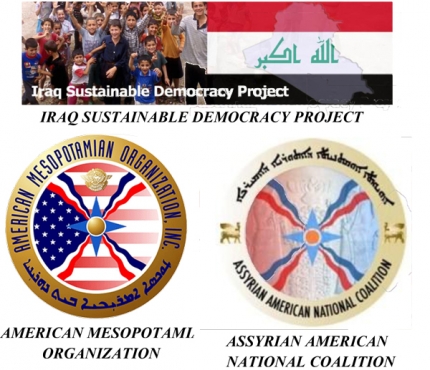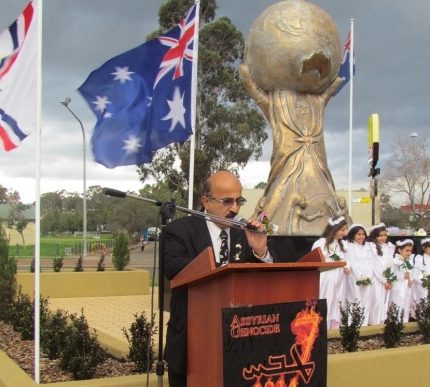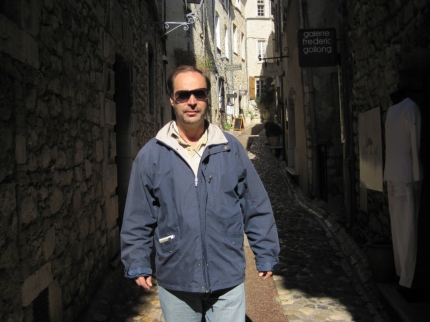Matthias Bjørnlund is a Danish archival historian specializing in the Armenian genocide and related issues. He has published articles and book chapters, as well as co-edited volumes on, among other things, the Armenian, Greek, and Rwandan genocides, and on genocide as a legal and historical concept. He received his MA in history from the University of Copenhagen in 2005. He is currently a lecturer at Danish Institute for Study Abroad (DIS), and co-editor of www.armenocide.net
What can you tell us about the field of Cultural Genocide?
This is sometimes seen as a tricky concept. What to some constitutes ‘progress’ – something that, at least in a larger perspective, is seen as necessary and good – constitutes the inexcusable destruction of individual as well as group identity to others. For the past century in particular, the notion that ‘you can’t make an omelet without breaking eggs’ has been a guiding principle for many a leader dealing with ‘troublesome’ minority groups. The policies implemented include destroying cultural artifacts and places of worship, forced assimilation, etc., whether or not accompanied by actual large-scale, systematic physical destruction of human lives. The persecuted minority, the proverbial ‘broken eggs,’ are most often even expected to be grateful that they are allowed to survive to become more or less full members of the preferred ethnic, religious, cultural, and/or social group. We see this over and over again, like in the treatment of Native Americans, of non-Turkish/Muslim groups in the Ottoman Empire and the Turkish Republic, and today in Tibet.
My personal opinion is that the concept of cultural genocide, while not applicable to any and all acts of cultural deprivation, is a useful one since the systematic destruction of culture is an attempt at destroying a group as such. It is thus a pity (though hardly a surprise) that Raphael Lemkin and others did not succeed in including cultural genocide as an article of the United Nations Genocide Convention. Like the failure to have political groups protected by the UNGC, this was very much the result of lobbying and political bartering of Western and Communist powers, respectively, and not so much of scholarly or legal (let alone humanitarian) concerns.
What can you tell us about the Scandinavian archives in regards to the Assyrian and the Armenian Genocide?
www.armenica.org As for the Scandinavian archives relating to the Armenian genocide, there is plenty of material. During the last 5-6 years, a number of scholarly articles and book chapters on the subject have been published, for instance by Vahagn Avedian from Sweden, Inger-Marie Okkenhaug from Norway, and by myself from Denmark. These publications are based to a large extent on original material written or collected by Scandinavian diplomats, missionaries, and relief workers. For those interested in the actual documents, these are good places to begin: www.armenocide.net has as Danish section which I edit, and it now has 80 foreign ministry reports online, in Danish with English and German translations. For similar Swedish documentation, there is a section on
Regarding the Assyrian genocide, there is, to the best of my knowledge, much less original material in the Scandinavian archives. I believe the reasons for this are by and large straightforward:
First of all, Scandinavian missionaries, who were very important eyewitnesses to the local and regional implementation of the genocidal designs of the Young Turks (CUP), worked mainly among Ottoman Armenians in Central and Eastern Anatolia before and during World War I. They usually had little knowledge of, or interest in, what went on further to the east or south. They had their hands full surviving and trying to save Armenian lives. One partial exception is the Danish missionary Hansine Marcher, who had witnessed the genocide of the Armenians in the Harput region. In 1916, she was on her way home through Diyarbekir, Urfa, Aleppo, Adana, and Konya after being expelled with a German colleague by the authorities. Among them was a young Assyrian, who burst out that “I die of horror! Remember what we have seen at Gøldschik [the large massacre site at Lake Göldjuk/Hazar Gölü]! It is my brothers and my sisters that they have murdered, because Armenians and Syrians are brothers. Since they have killed the Armenians yesterday, they can kill us today.” And they did, of course.
Second, Scandinavian diplomats in Constantinople (Istanbul) were equally unable to report much, if anything, on the fate of the Ottoman Assyrians. The persecution and destruction of Greeks is rather well documented in the Danish and Swedish foreign ministry archives, and the radical destruction of the Armenians was downright impossible to ignore for the diplomats; it was documented from a variety of reliable sources, and it was even to some extent conducted right under their noses in the Ottoman capital. That was not the case with the destruction of the Assyrians.
That being said, there are some interesting, though virtually unknown or forgotten, aspects of Scandinavian-Assyrian relations that I have dug up. Ottoman and Persian Assyrians first really appear on the radar of Scandinavian missionaries and relief workers around the time of the 1890s massacres during the reign of Sultan Abdülhamid II. Svenska Missionsförbundet (Swedish Missionary Society), for instance, were proselytizing among Assyrians in Urmia and Tabriz before the massacres, and they were also aiding Assyrian as well as Armenian survivors and refugees in Russian Caucasus during and after the massacres. This work actually received some Danish funding and support. There was even a small Norwegian mission in Urmia in the 1890s, headed by local Assyrian missionary Nestorius George Malech, who was employed by the Norwegian Evangelical Lutheran Mission Society to preach the Gospel. The relief organization Danish Friends of Armenians, founded by Danish-Jewish-Icelandic scholar and humanitarian Åge Meyer Benedictsen, supported not only Armenians, but also, to a smaller extent, Assyrians before, during, and after WWI. Unlike many other contemporaries who forgot or never knew, Benedictsen, in his seminal 1925 book on the history of the Armenians, explicitly acknowledged that the Assyrians suffered a fate comparable to that of the Armenians from 1915 onward.
Does your research indicate that the CUP planned a systematic ‘ethnic cleansing’ of all Ottoman Christians, such as Armenians, Greeks and the Assyrians, or was the plan only to exterminate one particular ethnic group? In your opinion, was there a massive systematic plan to exterminate Assyrians?
Genocide is rarely, if ever, about making and following a massive, systematic plan. Even the Holocaust was to some extent about radicalization, contingency plans, improvisation, etc. What the Young Turks wanted was a solution to a perceived problem – that posed by first of all the Christian groups of the Empire – and they went about it in various ways, going from boycotts to persecution and ethnic cleansing, ending with genocide. Whether there was a long-term, detailed plan behind this or not is interesting, of course, but it is not decisive. Reading scholars like David Gaunt, Ugur Ümit Üngör, and Racho Donef is very instructive in that respect also; they describe such things as the evolution of mass violence, inter-communal tension, how the center-periphery dynamic contributed to radicalization in the Assyrian and Armenian case. The Armenians, Assyrians, and Greeks were subjected to massacre, deportation, dispossession, forced assimilation, etc., to varying degrees and with varying intensity, but for largely the same reasons. It ended with the intentional and near complete disappearance of these groups from their homeland. That is genocide in my book. Genocides, like earthquakes, may differ in scope, etc., but they share essential traits.
Last year the Swedish parliament recognized the Assyrian, Armenian and Greek Genocide. What can you tell us about this recognition, and how likely is the future recognition of the genocide by the Danish and Norwegian parliaments?
Genocide recognition is primarily a political act and is often turned into a political game, and I am not much of a politician. Recognition can arguably have beneficial effects, especially in the face of the official Turkish denialist machine; it is just not something I get involved with. As for the Danish and Norwegian parliaments, I only feel (partially) qualified to speak about the Danish one: To put it briefly, there is little interest among Danish politicians in the Armenian, Assyrian, and Greek genocide(s). And, unlike Sweden, members of these ethnic groups in Denmark are still too few and too scattered to be able to lobby effectively.
As for the Danish government, the official position is somewhere between the Turkish position (the ‘leave history to the historians’ mantra) and the American one (the ‘Medz Yeghern’ euphemism). Denmark has chosen not to have an independent policy on this matter. It should be noted, though, that there are a handful of politicians here of Turkish/Kurdish origin who have not bought into the official Turkish state narrative, and they occasionally raise such issues as the denial and recognition of the Armenian genocide.
By Linda Abraham




